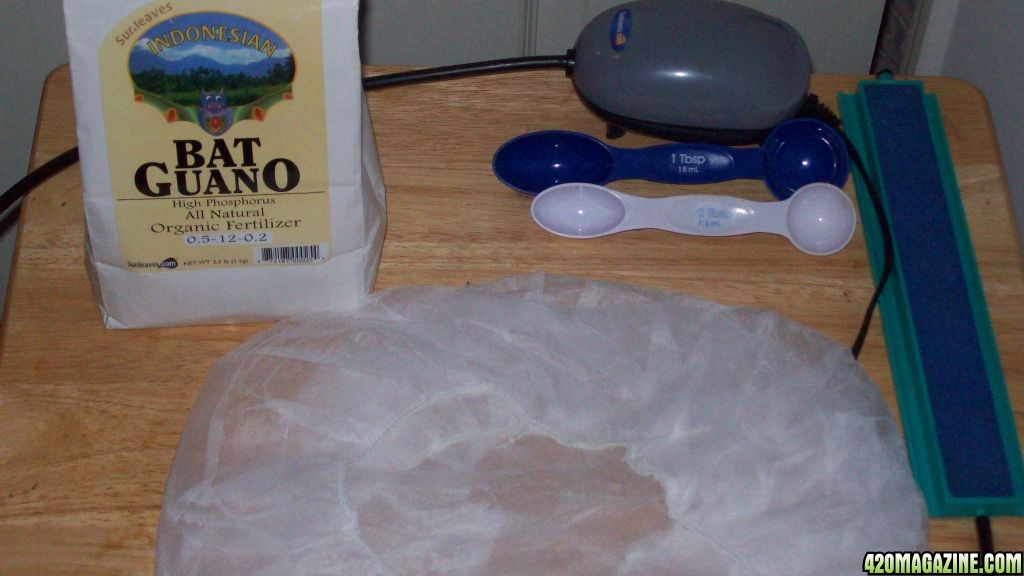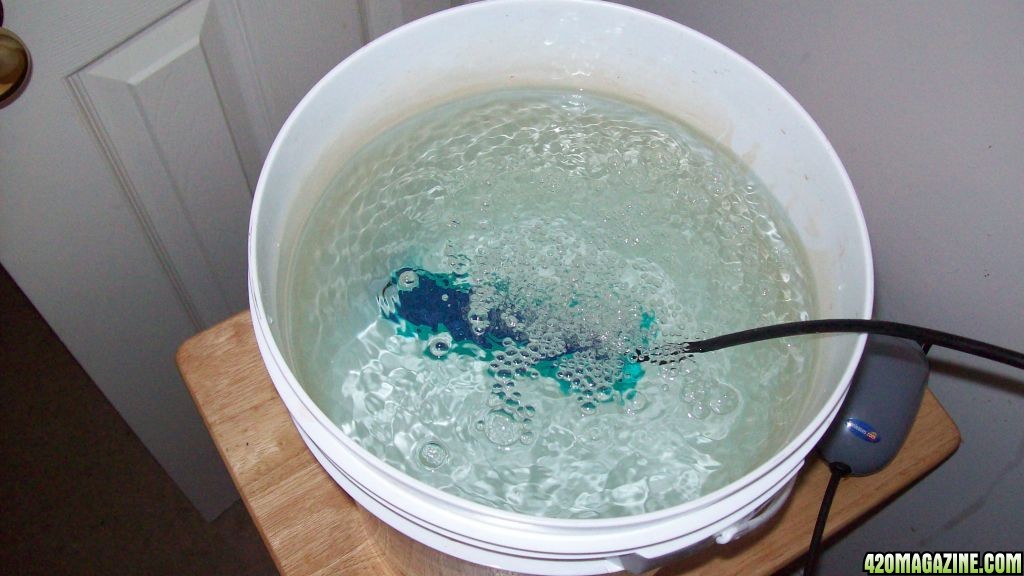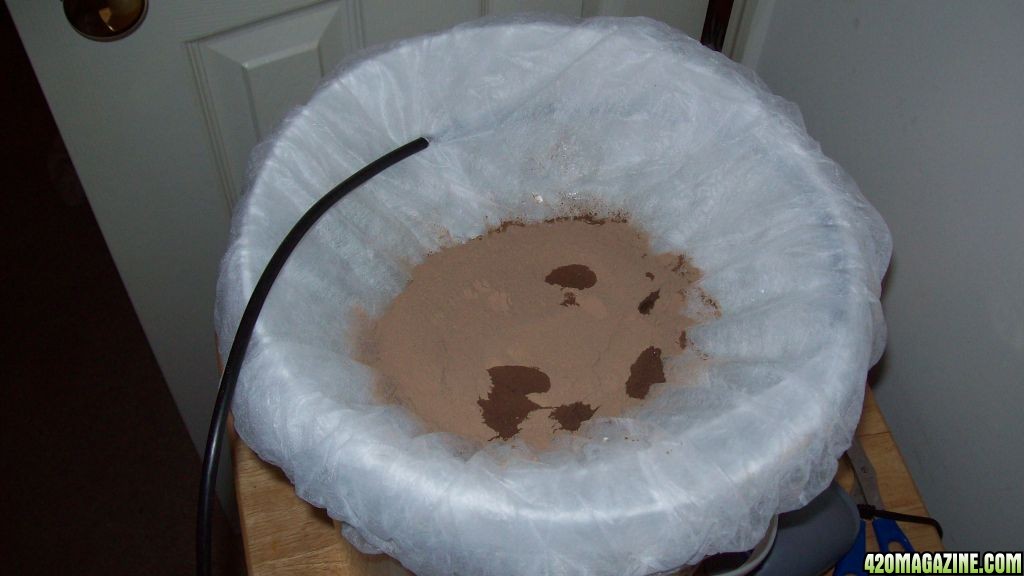Retired One
420 Member
Introduction
For thousands of years, guano has been used as a fertilizer. Wars have been fought over it as recently as the 1700's, and in the 1800's the United States government passed a law allow US citizens to occupy any island containing guano deposits, and maintain the sole right to sell it to market. Guano is natures super food. There are a litany of scientific reasons for this, but when you boil all the fat out of it comes down to this, guano is singularly well structured to deliver maximum nutrient uptake. Complimenting that nicely is the fact that they are the most N-P-K diverse organic nutrients and amendments available on the market today.
So in the following guide I'll attempt to explain a number of things.
1) N-P-K ratios and how they are determined
2) Uses of guanos as soil amendments
3) Uses of guanos as teas
4) Uses of guano teas as a base for standard nutrients
Note: This is probably not the best program for new or inexperienced grower. It requires a solid understanding of plant needs throughout the entire life cycle as well as being able to identify plant needs by sight. I've said it before and I'll say it again, I believe this post to be the most useful post, for all growers, on the entire site Cannabis Plant and Pest Problem Solver - Pictorial Got a problem? The answer is in there with pictures to help.
So, we shall begin now. I hope everyone finds this helpful.
N-P-K Values And How They Are Established
First, due to the large number of companies dealing in guano at the retail level, and the nearly infinite N-P-K combinations that result from that, it was necessary to select one brand to use for illustration purposes. I chose Sunleaves, because they are the most readily available in my part of the world. Sunleaves is OMRI certified, so you can be sure of it's 100% organic content. However, this should not be taken as an endorsement of this brand over any other, it was simply convenience.
Indonesian Bat
.5-12-.2
Jamaican Bat
1-10-.2
Mexican Bat
10-2-1
Peruvian Seabird
10-10-2
So the immediate question is how do we get such wide swings in the N-P-K values. The answer is quite simple actually. Diet. Bats that consume a diet high in fruit, like the Indonesian or Jamaican, excrete a guano high in P. Bats that survive on a diet consisting primarily of insects, like the Mexican, excrete guano high in N. Seabird guano doesn't have a single species source, many different birds contribute to these deposits, and the differences in the diets, and the diet of what the bird's food source was consuming, are reflected in a guano high in both N and P with a good amount of K as well. I want to reiterate that there a numerous companies out there, and their N-P-K values are different, in many cases, very different, and that difference opens all manner of numerical possibilities and this whole thing is numbers.
This was what fired my initial interest in using guanos. I realized that there was no perfect bottled set of nutrients. There was always a need for a little more of this or a little less of that, and all of a sudden the cabinet I keep my nutes in began to resemble a display case at the hydro store I frequent. I also tend to grow multiple strain at once and there are no two strains out there that want the same thing. Very few plants grown from seed of the same strain will want the same thing at the same time, so the flexibility it offered was very intriguing.
So with the understanding of the N-P-K levels, how they are established and the radically different values that can be provided by other suppliers, it's time to move on to preparation and application.
Guano as a Soil Amendment
A word of caution before we move forward. Guano is, of course, an organic nutrient. However, unlike your preferred bottled organic nutrient, you can burn a grow to a crisp with it. Careful, complete mixing in the soil is essential to eliminate guano hot spots in the soil. Take your time and be thorough or you will pay a price.
Amending soil with guano falls into two categories. Pre-plant and established plant.
Pre-Plant Soil Amendment
When pre-plant mixing, consideration must be given to the contents of the soil. For example, I'm using FFOF in my current grow. It contains enough nutrient value to supply the plant for the first 3-4 weeks of life, so I tend to use a 1 quart square planter for that period, allowing the plant to become slightly root bound. I then amend the soil with 1-2 Tablespoons of guano per gallon of soil, it pays to err on the side of caution here, some plants are nute sensitive, think Blueberry or Strawberry Cough. This is the first chance you have to kill your grow. Be patient, start with low doses, and learn what the strain will take.
I prefer to use Mexican Bat for this stage. The N is what the plants really want and need at this point. Others prefer to use Peruvian Seabird, liking the substantially higher P rating to help stimulate root growth, but I think it's to hot unless used in tiny amounts. I prefer the Seabird as a transitional topdressing when the plants are transitioning from veg to flower, but still have high N requirements as well as a growing hunger for P.
If you prepare your own soil, experimentation is the rule for you. Start small and move up slowly but regularly until you find the right amount. You know what you are putting into your soil, so you probably understand the N-P-K needs of a soil mix as well as anyone and quite likely are already using various guanos.
Established Plant Soil Amendment
Established plant soil amendment is just a fancy way of saying top dressing. 1/2 Teaspoon of guano per 1" of planter size. The plant may take more...potentially quite a bit more, but caution is the watchword until you get a feel for the plants reaction. Sprinkle it as evenly as possible over the topsoil and work it in well with a claw, follow with a slow, but drenching, water.
I prefer to do this twice. The first time is about 3-4 days before they go to 12/12. I'll apply Seabird guano to start laying on the P and hardening it to the even hotter Indonesian that's on the way for the peak of flowering. The second is just short of halfway through flowering, when I give it as much Indonesian as I think she'll stand.
Use of Guanos as Teas
Unlike soil amending, tea feeding is a fast absorption application. I have seen P deficient plants, with stems nearly completely red, be back to normal in 5 hours. This is an area where the structure of the guano lends itself to maximum quick delivery of nutrients.
There are two ways to make a guano tea. The first is directly mixing your guano into the water. For this method you will need:
One or more 5 gallon buckets.
An air pump
An air stone
Heating pad.
This method is quite simple, and can be used by people who have not heavily amended their soil, to provide some measure of time release feeding.
Fill your bucket with warm, not hot, water and place it on top of a heating pad on it's lowest setting.
Insert air stone and plug in air pump.
Dump measured guano into bucket and leave for 24-48 hours.
The resulting tea will look exactly like what it is...semi dissolved pooh, but there is no really detectable odor. Before application this tea can be strained off for use by those who have amended their soil. If you do not strain it off, keep it well mixed during application. This method is hard on air stones, and you will be regularly replacing them.
The second is the tea bag method and it is used almost exclusively by those who have amended their soil to some degree or another or have gotten sick of replacing air stones This method requires the following:
One or more 5 gallon buckets.
An air pump
An air stone
Heating pad
Filtration material...this can be anything from cheesecloth to coffee filters. I use restaurant hairnets provided by a buddy who owns a restaurant. They are the must useful things for this as well as filtering butter, and do a pretty good job as hash screens when tightly doubled up.

Insert your air stone and test.

Place hairnets over bucket, I use three, and push the airline though the nets and reconnect to air stone. You can drill a hole though the bucket for the line if you wish.

Place guano in the hairnets.

I put one net over the top.

Leave this to brew up for a minimum of 48 hours, and then apply.
Both of these methods produce an extremely potent feed. As with just about any nute, the 1/4 to 1/2 to 3/4 to full strength method of stepping up the strength should be applied. Feed rates are 1/4-1/3 gallon per gallon of planter size. Watch closely after the first feed and each resulting step up for signs of burn. Flush quickly and completely if needed.
I use tea feeds as replacements to plain waterings, although every fifth wetting is a plain water soak.
Use of Teas as a Base for Standard Nutrients
Note: This method should only be employed by those using a completely organic nutrient regime. Those using a chemical organic program should not attempt to use a tea base with their nutrients as serious problems could potentially arise.
Teas bases are an outstanding way to boost specific nutrient values to address a deficiency or a need for more of a particular nutrient.
For example, a plant that is 5 weeks into the vegetative cycle may need more N than the nutrients are providing, so a tea of Mexican bat guano would make an outstanding base to deliver the higher doses of N.
Great caution should be used when employing this technique. Heavy handed application of a tea base/nute mix can cause irreparable harm to your grow.
To use a tea base, brew a half strength tea and strain completely. Removal of all non dissolved material is essential. To this, add your nutrients in stages and mix completely. When using this technique for the first time, careful attention must be payed to the plant. Any evidence of burn at all should be met with a heavy flush, followed by a reduction in strength of tea and nutes by 25%.
Tea bases, while an extremely useful tool for "loading" a particular nutrient, should be used with caution. The combination of the fast absorption and slow release can cause runaway burn issues. It is best to use this technique to head off a potential deficiency. Routine use of this technique is not recommended.
A Note on Castings
Worm castings are an indispensable component in an organic growers bag of tricks. Whether amending soil or providing a direct feed tea, worm castings have proved their value time and again.
Worm castings were, and for the most part still are, red worm castings. What changed was the diet. Until around 10 years ago, the vast majority of red worm castings were fed a diet of cow manure. Most growers know that while cow manure is usable, it is far from optimal. Around ten years ago, two events conspired to change this. First, was a growing backlash against hog farmers in the state of North Carolina. Brothers and Sisters, a hog farm stinks...from miles away. It's the worst, most disgusting smell you can possibly imagine. There were also serious environmental concerns over the huge waste ponds of hog excrement. Then, in rapid succession, the remnants of two hurricanes passed directly over the eastern portion of the state, the area containing roughly 90% of the states hog farms and a good portion of the state found themselves shoveling pig pooh out of their houses. New restrictive laws were enacted, and the hog farmers had to figure out something else to do with the waste.
Before too long worm farms began popping up alongside hog farms. Interestingly, these farms were not initially interested in marketing castings, they were selling the red worms as bait, and selling the castings as an afterthought to local farmers to fertilize their fields with. Within two years, it became apparent that they were not dealing with an ordinary fertilizer.
Most castings have a seemingly low N-P-K value, 1-1-1 to 4-2-2. Hog manure fed worms had an N-P-K value, established by the North Carolina Department of Agriculture, of 8-18-6. A combination of numbers that is extremely interesting, as a tea of this would seem to be a perfect for a plant from around week 4 until the grow is done. I have ordered a box of these castings and will be experimenting with them further and I'll report on the results.
A Closing for Now
This is just the beginning of a guide that I'm sure will evolve over the coming months. As I gain more experience with the combinations and applications, I'll post more specific recipes. If I post it, it's been tested thoroughly...nothing here is experimental. I personally enjoy the experimenting process, but have no desire to lead anyone astray by suggesting radical formulations or untested ideas. However, for those with the knowledge and inclination, there is an endless variety of combinations to play with.
Be careful with your preparation. Check your measurements twice. Pay close attention to what the plant is telling you, especially in the 5-6 hours following a feed. Take notes if it helps you keep track of what you are doing. Following those steps will ensure you do no harm.
Many thanks to Soniq420 for his editorial and posting assistance. It's a great help to have someone who knows what they're about looking over things and offering suggestions.
The thread is now open for questions or comments.





 Some great Signature link Material. Great job SouthernWeed many will benefit from your hard work. Thanks
Some great Signature link Material. Great job SouthernWeed many will benefit from your hard work. Thanks peace n good luck MF
peace n good luck MF